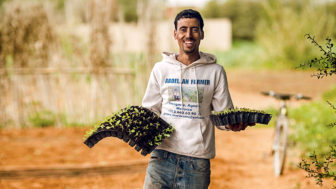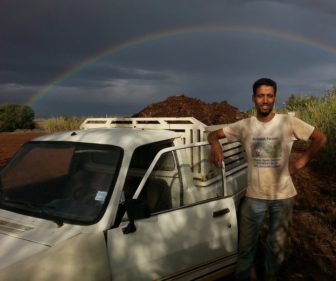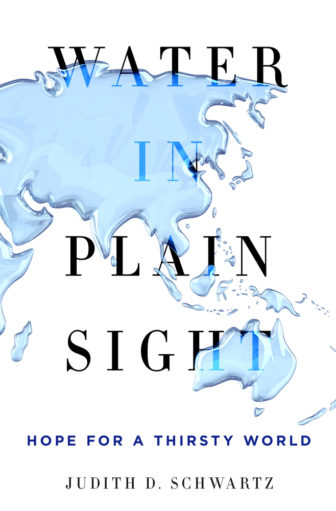Beyond Monsanto’s GMO Cotton: Why Consumers Need to Care What We Wear
As the linked article below this article points out, Monsanto’s new super-toxic GMO dicamba-resistant cotton is already wreaking havoc across the U.S. But even beyond Monsanto’s latest “Frankencotton,” there are a myriad of reasons why we need to start paying as much attention to what we wear as we do to what we eat.
We are not only what we eat, but also what we wear. The U.S. is the largest clothing and apparel market in the world, with 2016 sales of approximately $350 billion. The average American household spends about four percent of its income on clothing, more than one-third of what we spend on food.
If Americans are what we wear, then we—even the most rebel youth, conscious women, organic consumers, and justice advocates—judged by what we wear (not just what we say) are increasingly corporatized. The fashion statement we’re apparently making with what we wear is that we don’t care. A look at the labels in our clothing, or the corporate logos on our shoes, reveals that the brand name bullies, the transnational giants in the garment and apparel industry, reign supreme.
Walk into any department store or clothing retailer. Look for a label that says “certified Organic Cotton or Wool and Fair Trade.” Search through rack after rack, in store after store, but you aren’t likely to find very many items that are non-GMO, organic and Fair Trade certified.
There are, however, a growing number of online and retail clothing companies and brands, which offer non-sweatshop, natural fiber and organic clothes, accessories, and textiles. These companies include Patagonia, PACT, Under the Canopy, Fibershed, Savory Institute, TS Designs, Maggie’s Organics, Indigenous, Hempy’s, and many others. Unfortunately, most U.S. consumers, even organic consumers, have never heard of these socially and environmentally responsible clothing companies.
Given the importance of clothing and fashion in American culture and the economy, there are a number of rarely discussed, yet crucial issues we need to consider—health, environmental, and ethical—before we pull out our wallets to purchase yet another item of clothing or a textile product.
1.Synthetic fibers in clothing and textiles pollute the environment, the ocean, and ultimately the food chain. Clothes and textiles are made from both natural fibers, like cotton, hemp and wool, and synthetic fibers, like fleece, rayon or polyester. Synthetic fibers, often marketed as wrinkle-resistant, durable or easy-to-clean, are industrially produced, utilizing large amounts of energy and toxic chemicals. Polyester, for example, is made from petroleum, a non-renewable fossil fuel. Rayon, technically “semi-synthetic,” is derived from wood pulp and transformed into fiber through a highly water- and chemical-intensive process in notoriously polluting factories.
Once manufactured into fleece sweaters, bath towels or sheets, and brought home by consumers, synthetic fibers pollute the natural environment in the form of “micro-plastics.”
Whereas natural fibers, including cotton or wool, biodegrade over time, synthetic fibers do not. Scientists and marine biologists have begun sounding the alarm that clothing and other consumer products containing synthetic fibers (such as polyester, nylon, fleece and acrylics) release plastic-like micro-particles when washed, passing through sewage treatment plants, polluting surface waters and the oceans, where they are eaten and bio-accumulate in fish and other marine life, eventually contaminating the seafood that we eat.
“[S]ynthetic fibers are problematic because they do not biodegrade, and tend to bind with molecules of harmful chemical pollutants found in wastewater, such as pesticides or flame retardants.”
As Reynard Loki pointed out in Alternet last year:
Finished apparel products contain large quantities of chemical substances . . . many of which are released from garments during consumer washing. This indicates that microfibers are of particular concern regarding their potential to transport hazardous chemicals into the environment. Wastewater treatment plants (WWTPs) receive large amounts of microfibers daily. While most of these microfibers are removed, a significant amount is still released into the local environment. Aquatic organisms throughout the food chain consume micro-plastics and microfibers both directly and indirectly. Within the food chain, these particles have been found to cause physical and chemical impacts, resulting in starvation and reproductive consequences in species. Synthetic fleece jackets release an average of 1.7 grams of microfibers with every wash. Older synthetic fleece jackets shed nearly two times the amount of microfiber than new ones.
If you already have clothing or textiles containing synthetic fibers, and certainly most of us do, please consult the articles below for how you can safely and responsibly wash these garments, by using a washing laundry bag called “Guppy Friend” or by installing a filter in your washing machine.
But perhaps the safest thing to do is to stop buying clothing and textiles containing synthetic fibers.
2. Non-organic cotton is one of the most genetically engineered, pesticide- and chemically-contaminated crops in the world. Over 90 percent of the cotton grown in the U.S. is genetically engineered, spliced with the Bt toxin and modified to survive the spraying of large quantities of Monsanto’s controversial herbicide, Roundup. GMO cotton is grown on 70 million acres across the world, including the overwhelming majority of cotton grown in the U.S. India, Pakistan and China. While occupying a relatively small percentage of arable land globally (2.4 percent), GMO/chemical cotton crops account for a staggering 25 percent of global insecticide sales. In the U.S., it typically takes a third of a pound of toxic agricultural chemicals to produce a pound of cotton—that is, the amount of cotton it takes to make one T-shirt. Several pesticides used on cotton are known carcinogens, including Roundup.
Not only do these pesticides linger on the clothes worn next to human skin, but the fish, marine and wildlife surrounding or downstream from cotton fields also suffer from pesticide pollution. Non-organic cotton crops utilize large amounts of chemical fertilizers that routinely pollute groundwater and emit nitrous oxide, the most destructive of all greenhouse gases—300 times more destructive per weight than CO2. Non-organic cotton requires large amount of irrigation water and is typically processed and dyed with synthetic chemicals. Routine spraying of non-organic cotton fields with herbicides such as Roundup, and application of chemical fertilizers, not only kill soil fertility, but also destroy the soil’s’ ability to properly infiltrate and store rainwater and to naturally sequester excess carbon from the atmosphere.
3. GMO and toxic cotton: You’re eating it. Keep in mind that most of the world’s highly contaminated cotton seeds and cotton gin trash end up in animal feed (especially non-organic dairy) and in low-grade vegetable cooking oils, purchased by consumers or used in fast food restaurants and school cafeterias. Non-organic cotton is one of the most toxic crops on the planet.
Government regulatory agencies, prompted by large cotton farmers and the garment industry, falsely claim that cotton is not a “food crop,” (in spite of the fact that 60 percent of what is harvested by weight ends up in the food chain). This means that super-toxic pesticides and herbicides are allowed to be sprayed, in copious quantities, on the cotton plant. So-called cotton by-products—cotton seeds, cotton seed oil and cotton gin trash—end up being sold and consumed as ingredients in both animal feed and human food. The pesticide residues in cottonseed accumulates in the fatty tissues of dairy cows, and are passed on in the milk and dairy products consumed by humans. Cottonseed oil is routinely laced into a variety of food products, from vitamins to potato chips, and is often addes to olive oil without being labeled. This means that GMOs and pesticide residues from cotton crops find their way into a wide range of non-organic food products, triggering health issues including food allergies, cancer and liver, kidney and immune system damage.
4. Agricultural workers are being poisoned by toxic cotton. Farmers, farm workers and residents of rural communities who work and live in closest proximity to cotton fields suffer from exposure to pesticides, GMOs and chemicals. Many of these agricultural workers suffer from acute pesticide poisoning. Rural cotton farmers in particular lack the necessary safety equipment and training for handling the hazardous pesticides, leading to chronic and acute health issues. Pesticides used in cotton farming have been shown to cause endocrine dysfunction, with farmers in rural and poor areas especially at risk.
5. Millions of cotton farmers in the developing world are exploited in the global marketplace. Small cotton farmers in developing countries struggle financially, unable to compete in the global market because of multi-billion dollar (taxpayer-financed) U.S. cotton subsidies. The result is both economically and socially devastating. Subsidies allow U.S. cotton farmers to sell cotton at less than the price of production, lowering market prices for cotton, while production costs continue to rise along with the cost of seeds and pesticides. Thus, cotton farming in some developing countries is no longer financially viable, due to U.S. subsidies. Developing countries dependent on agricultural production falter economically, as farmers fall into debt. India’s cotton farmers are committing suicide at an alarming rate in response to this phenomenon, its once-thriving cotton belt since renamed the “suicide belt.”
6. Most garments are manufactured in sweatshops, such as those in Bangladesh, Cambodia, Pakistan and Viet-Nam, that routinely abuse and exploit their workers. Paid less than minimum wage, less than a living wage, and often deprived even of these wages, garment factory workers suffer from unsafe working conditions, physical, psychological and sexual abuse, 18-hour work shifts and other illegal labor practices in an industry that prospers from the dehumanization of its labor force. Women make up the overwhelming percentage of garment factory workers who are forced to work in these conditions under the threat of extreme poverty. Obscured by the maze of global industry, labor laws remain unenforced in sweatshops, while those who sell these garments to consumers claim ignorance of the exploitation from which they profit.
7. Chemical-intensive clothing poses dangers to human health. Skin is the body’s largest organ. One of its major jobs is to protect internal systems. But skin also acts as a conduit, a way of entering the bloodstream through absorption. Chemicals and pesticides from synthetic materials and non-organic cotton make their way into human bodies through our skin. If you care about what you put in your body, you must also care what you put on your body. Health issues from such toxic chemical exposure range from headache to asthma to cancer.
8. The dangers of GMO/ chemical cotton and synthetic fibers increase the more your clothing promises. “Easy care” garments are especially saturated by chemicals, such as formaldehyde, triclosan and pre-fluorinated chemicals, to give clothes features such as anti-microbial, anti-odor or anti-wrinkle characteristics. Formaldehyde, used to eliminate wrinkles, static, odor and bacteria from clothes, is highly toxic and known to cause cancer, skin ulcerations, heart palpitations, eczema, asthma and other health issues. The U.S. Environmental Protection Agency classifies pre-fluorinated chemicals—which make fabric stain resistant—as cancer-causing agents. Triclosan is another chemical used in clothing to prevent the growth of bacteria on athletic clothing. These chemicals in “easy care” garments enter the bloodstream via the skin. Clothing containing nanoparticles, often marketed as stain- or odor-resistant, represents a new and ominous health and environmental threat. Nanoparticles in consumer products are neither labeled nor safety-tested.
9. What women wear “down there” is not as innocuous as you may think. Because feminine hygiene products are considered “medical devices,” those who manufacture pads and tampons are not required to disclose their ingredients. Bleached and made from the chemical- and pesticide-drenched materials of non-organic cotton and rayon (wood pulp), pads and tampons contain various ingredients that may be toxic and absorbed through skin and mucous membranes. The FDA regulates the process through which tampon materials are bleached, claiming that levels of dioxins (toxic, chemically-related compounds common in environmental pollutants) are at or below the “detectable level” and that such trace amounts do not trigger health concerns. The World Health Organization explains that “dioxins are highly toxic and can cause reproductive and developmental problems, damage the immune system, interfere with hormones and also cause cancer.” Dioxins are present in environmental pollution, and commonly consumed by humans through food. Alhough new bleaching procedures for tampon materials generate a significantly less amount of dioxins, trace amounts remain.
Cotton used in pads and tampons also contain the pesticide residue from the highly treated crop, as well as genetically modified ingredients. What looks like cotton can also be bleached wood pulp, or rayon, a semi-synthetic material made in a chemically-intensive process. Toxic Shock Syndrome, a rare and dangerous illness caused by a bacterial infection from Staphylococcus aureus, has been linked to super-absorbent tampons made of a blend of synthetic materials including rayon. Toxic Shock Syndrome occurs from leaving such tampons inserted for long periods of time, creating both an environment for the bacteria to grow as well as tears and abrasions inside the vagina. As with anti-odor clothing, tampons with fragrance or anti-odor properties contain more chemicals that may be harmful to health. Safer alternatives to conventional feminine hygiene products include organic tampons and pads.
10. The choices you make regarding your clothing and textiles are not only expressions of style or identity, but are vital to personal health as well as environmental and ethical responsibility. You should feel good in your clothes—good about the way your clothes were produced and made, good about their effects on your health, and good about the way they make you feel. Consumerist culture is toxic in the way it encourages people to constantly buy and replace clothing produced through unethical conditions. It can be difficult to divorce yourself from this toxic culture, to establish your clothing choices outside of this pressure. To not care about clothes and textiles is not the solution. The solution, rather, is to care what you wear. The solution is to care how fibers are produced and processed, to care how your clothes are made, to care what is in the garments you wear next to your skin, and ultimately, to care how you feel wearing them.
It’s time to care about what we put on or in our bodies and into the environment. It’s time to address the issue of sweatshops in the fields as well as sweatshop factories. It time to Care What We Wear as we consider Clothes for a Change.




